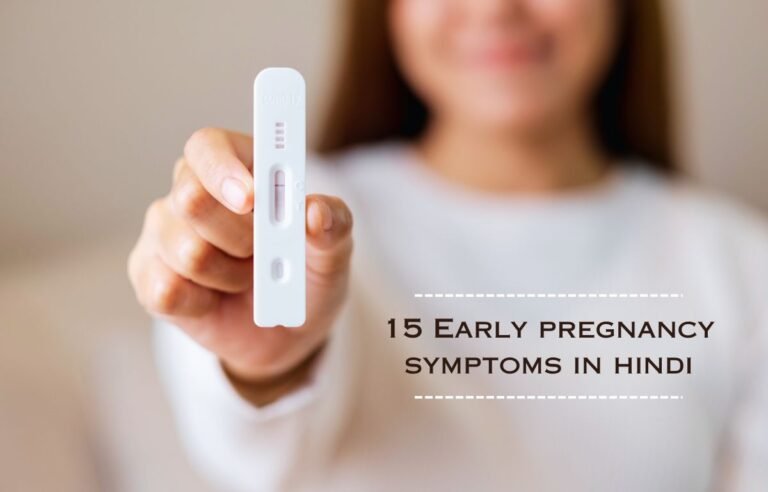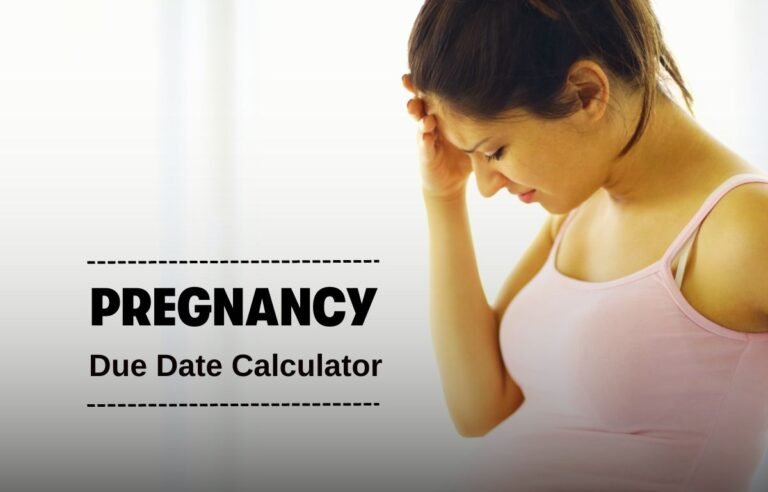Introduction
Do you know when you’re most fertile? Knowing your ovulation date can help you plan your sex life and increase your chances of getting pregnant. But how do you calculate it if your period lasts 5 days? In this article, we will explain how your menstrual cycle and fertility work, and how to find out when you ovulate based on your 5-day period.
You’ll also learn how to track your ovulation signs and boost your conception odds. Read on to discover When Do I Ovulate? If My Period Lasts 5 Days, and the best time for conception.
Key Points

Table of Contents
What is Ovulation and Why is it Important? Ovulation is the key event in your menstrual cycle that determines your fertility. It is when one of your ovaries releases an egg that can be fertilized by sperm. Ovulation usually happens around the middle of your cycle, but it can vary depending on many factors.
Do you know about Invalid test in pregnancy
How to Find Out When You Ovulate If Your Period Lasts 5 Days? If your period lasts 5 days, you can estimate your ovulation date by using a simple formula which is given below in this article, but this method is not very accurate.
A better way to find out when you ovulate is to track your ovulation signs, such as your basal body temperature, cervical mucus, and ovulation tests.
Understanding Your Menstrual Cycle and Ovulation

If you have a 5-day period, you might want to know how ovulation and fertility work in your cycle. Your cycle has different phases, starting with the first day of your period.
Your period is the time when you bleed, and it lasts for 5 days. Ovulation is the time when your ovary releases an egg that can be fertilized by sperm. Ovulation usually happens around the middle of your cycle, but it can vary depending on your cycle length. Your fertile window is the time when you are most likely to get pregnant. It is the six days before and on the day of your ovulation.
To find your fertile window, you need to track your ovulation signs, which are the changes that happen in your body when you ovulate. These signs include your basal body temperature, your cervical mucus, and your ovulation tests. By tracking these signs, you can increase your chances of getting pregnant after a 5-day period.
The Ovulation
Ovulation is the process of releasing an egg from your ovaries, which can then be fertilized by sperm. Ovulation usually occurs around the middle of your menstrual cycle, but it can vary depending on many factors. Some of these factors are stress, illness, travel, or lifestyle changes.
To estimate your ovulation date, you can use a simple formula: subtract 14 from your cycle length, which is the number of days from the first day of one period to the first day of the next. For example, if your cycle length is 28 days, your ovulation date is around day 14. If your cycle length is 30 days, your ovulation date is around day 16.
However, this method is not very accurate, as your ovulation date can change from month to month. A better way to find out when you ovulate is to track your ovulation signs.

Signs of Ovulation: Fertility signs post 5-day menstrual cycle
If you want to know when you ovulate, you can look for the signs that your body gives you. These signs can help you find your fertile window, which is the best time to have sex for conception.
In this section, we will show you how to track three main ovulation signs: your basal body temperature, your cervical mucus, and your ovulation tests. We will also give you some tips and resources to make your tracking easier and more accurate.
What are Ovulation Signs and Why are They Important?
Ovulation signs are the changes that happen in your body when you ovulate. Ovulation is when one of your ovaries releases an egg that can be fertilized by sperm.
Ovulation usually happens around the middle of your cycle, but it can vary depending on many factors. Tracking your ovulation signs can help you estimate your ovulation date and find your fertile window.
Your fertile window is the six days leading up to and including your ovulation date. This is the best time to have sex for conception, as sperm can survive up to five days in your reproductive tract, and the egg can survive up to 24 hours after ovulation.
How to Track Each Ovulation Sign
There are three main ovulation signs that you can track: your basal body temperature, your cervical mucus, and your ovulation tests. Here is how to track each sign and what to look for:
Basal Body Temperature (BBT): This is your lowest body temperature when you’re at rest. It usually rises slightly after ovulation, so you can use a thermometer to measure it every morning and look for a spike. A spike is a rise of at least 0.2°F or 0.1°C from your previous six temperatures.
Your ovulation date is usually the day before the spike, or the last day of your lowest temperatures.
Cervical Mucus: This is the fluid that comes out of your cervix. It changes in texture and color throughout your cycle, and becomes clear, slippery, and stretchy around ovulation, like raw egg white. This type of mucus helps sperm swim and survive in your reproductive tract.
You can check your cervical mucus by wiping with a tissue or inserting a finger into your vagina. Your ovulation date is usually the last day of your egg white cervical mucus, or the day of your most fertile mucus.
Ovulation Tests: These are strips that detect the surge of luteinizing hormone (LH) in your urine, which happens 24 to 36 hours before ovulation. LH triggers the release of the egg from your ovary.
You can use these tests daily around your expected ovulation date and look for a positive result. A positive result is when the test line is as dark or darker than the control line. Your ovulation date is usually the day after your first positive test, or the day of your darkest test.
By tracking your ovulation signs, you can find your fertile window, which is the best time to have sex for conception. Your fertile window is the six days leading up to and including your ovulation date. This is because sperm can survive up to five days in your reproductive tract, and the egg can survive up to 24 hours after ovulation.
Calculating ovulation from 5-day menstrual cycle
To find out when you ovulate, you need to understand how your menstrual cycle works. Your menstrual cycle has two main parts: your period and your cycle length. Your period is the time when you bleed, and your cycle length is the time from the first day of one period to the first day of the next. Knowing these two numbers can help you estimate your ovulation date.
Step 1: Know Your Period and Cycle Length
Your period length is the number of days you bleed, usually between 3 and 7 days. Your cycle length is the number of days from the first day of one period to the first day of the next, usually between 21 and 35 days. You can track your period and cycle length using a calendar, an app, or a journal.
Step 2: Use the Formula to Calculate Your Ovulation Date
To estimate your ovulation date, you can use a simple formula: subtract 14 from your cycle length. For example, if your cycle length is 28 days, your ovulation date is around day 14. If your cycle length is 30 days, your ovulation date is around day 16.
Ovulation Date = Cycle Length – 14
Step 3: Be Aware of the Limitations and Variations of This Method
This method is only an approximation, as your ovulation date can change from month to month due to many factors. Some of these factors are stress, illness, travel, or lifestyle changes. Also, some women have shorter or longer luteal phases, which are the time between ovulation and your next period. This can affect the accuracy of this method.
That’s why you should also track your ovulation signs, which are the clues your body gives you when you ovulate. These signs include your basal body temperature, cervical mucus, and ovulation tests. We will explain how to track these signs in the next section.
Factors That Can Affect Ovulation
Ovulation is the process of releasing an egg from your ovaries, which can then be fertilized by sperm. Ovulation usually occurs around the middle of your menstrual cycle, but it can vary depending on many factors. Some of these factors are:

Stress: Stress can affect your hormone levels and interfere with your ovulation. Stress can also cause irregular periods, which can make it harder to predict your ovulation date. You can try to reduce stress by doing relaxing activities, such as meditation, yoga, or hobbies.
Diet: Diet can influence your ovulation and fertility by affecting your weight, hormone balance, and nutritional status. You should eat a balanced diet that provides you with enough calories, protein, healthy fats, vitamins, minerals, and antioxidants. You should also avoid foods that can harm your fertility, such as trans fats, processed meats, added sugars, and alcohol.
Exercise: Exercise can benefit your ovulation and fertility by improving your blood circulation, reducing stress, maintaining a healthy weight, and balancing your hormones. However, too much or too little exercise can also harm your ovulation and fertility by causing hormonal imbalances, irregular periods, or ovulation suppression. You should aim for moderate physical activity, such as walking, swimming, or cycling, for about 30 minutes a day, five times a week.
Smoking: Smoking can damage your ovulation and fertility by affecting your egg quality, ovarian function, hormone levels, and cervical mucus. Smoking can also increase your risk of miscarriage, ectopic pregnancy, and early menopause. You should quit smoking as soon as possible if you want to improve your ovulation and fertility.
Medical conditions: Some medical conditions can affect your ovulation and fertility by causing hormonal disorders, ovulatory dysfunction, or structural problems. These conditions include polycystic ovary syndrome (PCOS), endometriosis, thyroid disorders, diabetes, and autoimmune diseases.
You should consult your doctor if you have any of these conditions or suspect you might have them. Your doctor can diagnose your condition and offer treatments or advice to help you ovulate and conceive.
These are some of the common factors that can affect your ovulation and fertility. By being aware of these factors and taking steps to improve them, you can increase your chances of ovulating and getting pregnant. If you want to learn more about ovulation and fertility, you can check out some of these web search results:
Best time to conceive after 5-day period
Looking for, How to get pregnant after 5-day period? If you have a 5-day period, you might wonder when is the best time to get pregnant. The answer you are not going to pregnant during your period, but around the middle of your cycle.
This is when you ovulate, which means your ovary releases an egg that can be fertilized by sperm. Your fertile window is the six days before and on the day of your ovulation. This is the best time to have sex for conception, as sperm can survive up to five days in your reproductive tract, and the egg can survive up to 24 hours after ovulation.
To find your fertile window, you need to know your cycle and your ovulation signs. These signs are the changes that happen in your body when you ovulate, such as your cervical mucus and your basal body temperature. By tracking these signs, you can increase your chances of getting pregnant after a 5-day period.
OK, I can try to rewrite this paragraph for you. Here is a possible rewrite:
How to Get Pregnant After a 5-Day Period: A Summary
In this guide, we trying to cover topic about ‘If my period lasts 5 days when do I ovulate’ we learned how to understand ovulation and fertility after a 5-day period. We showed how to estimate your ovulation date and fertile window based on your period and cycle lengths. We also explained how to track your ovulation signs, such as your basal body temperature, cervical mucus, and ovulation tests.
Moreover, we gave some tips on how to improve your fertility and health by following some practices, such as eating a balanced diet, exercising regularly, avoiding smoking and alcohol, managing your stress, and taking prenatal vitamins.
Take Charge of Your Fertility Journey. Now that you know how to get pregnant after a 5-day period, it’s time to apply what you learned. Whether you’re trying to conceive or just curious about your body, using these methods can help you increase your chances of success.
Have you started tracking your ovulation signs, or are you planning to do so? Share your stories, questions, or advice in the comments below. Your journey is different from others, and by sharing your thoughts, you can help and learn from others. We wish you all the best on your way to conception.
FAQs
Disclaimer
we are not Doctor or Health adviser. we make no warranties or representations and disclaim all responsibility and liability for the completeness, accuracy, or reliability of the above mentioned content. The content on our platform is for informative purposes only, and may not cover all clinical/non-clinical aspects.






